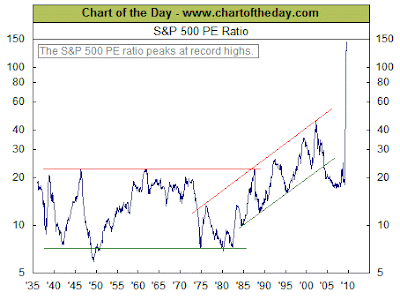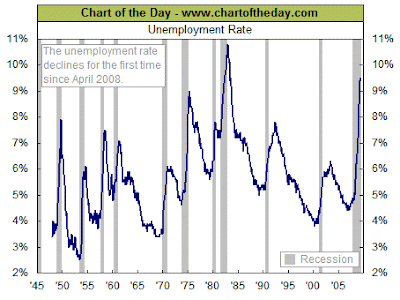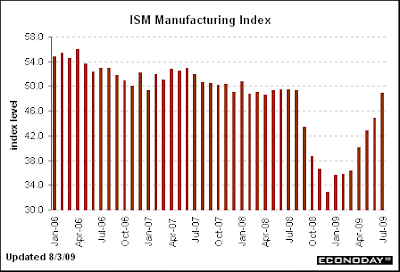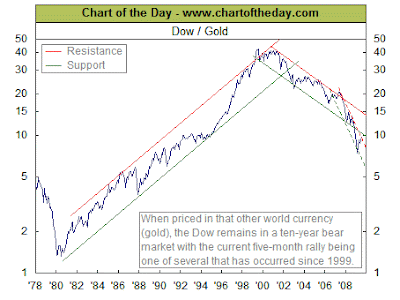 Natural gas prices in the US
Natural gas prices in the US have followed a downward spiral for a couple of month, and
are now 4.5 times lower than in July 2008 at less than $3 / mmBtu (Henry Hub spot). This downward spiral accelerated since August 6, 1 month future prices losing 30%.
According to the
EIA:
Factors on both sides of the market place have contributed to the price declines over the past several months. Recent reductions in natural gas price levels may be related to continued strength in domestic production capacity, specifically in unconventional gas fields [...]. Reduced demand as a result of the decline in economic activity is evident in the industrial sector, which accounts for more than 30 percent of yearly natural gas deliveries. The combined impact of these influences on the recent natural gas supply and demand balances has resulted in an inordinately high amount of natural gas in storage for this time of year.
Working gas in underground storage as of last Friday is estimated to have been 3,204 billion cubic feet (Bcf), which is 19.1 percent above the 5-year (2004-2008) average. During the week ending Friday, August 14, implied net injections of natural gas into underground storage totaled 52 Bcf.
In addition,
the hurricane season did not bring any production/distribution disruption in the Gulf of Mexico
so far which likely contributed to lower prices. However, peak storm season has only just begun, and a potential disruption to supplies cannot be discounted in the coming weeks.
Finally, August 24 the U.S. Natural Gas Fund, an exchange-traded fund held about 10% of the contracts in the October 2009 futures market traded on NYMEX. Combine that position with its over-the-counter swap holdings, and
UNG held the equivalent of more than 50% of the October contract's open interest. In following its plan to buy and hold natural gas, UNG keeps rolling its position into the next futures month.
In a bear natural gas market, UNG's massive monthly gas sell-off accelerates the fund's losses and brings down the price of natural gas with it.
UNG's equivalent position in the October futures contract amounts to over a trillion cu. ft. of gas. Given that the U.S. consumes an average of about 2 trillion cu. ft. of gas per month, UNG's position in the front month — at over half of that month's consumption — seems too large for a purely speculative fund.
This results in creating a great pricing inefficiency because this natural gas speculator is following a predefined plan — and the plan is publicly known.
Whilst the number of rig count was halved during the year, it did not offset the weak economy, good weather conditions,
snappy production at both conventional and unconventional sources such as shale.
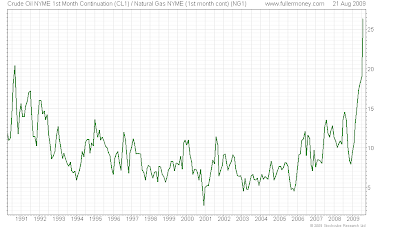
In the meantime, oil prices have continued to recover. Since the trough of the stock market on March 9, oil prices (WTI) have increased by over 50% whilst gas prices (Henry Hub) decreased by almost 30%. This has resulted in a oil/gas ratio reaching historical high. Technically the acceleration is impressive and cannot last. This ratio stand at 28, more than twice the historical average.
Gas prices are very volatile and there is no world market: it is a difficult instrument to trade where local circumstances can have large impact on prices. Whilst I cannot dismissed a total collapse of gas prices (particularly if there is not enough storage capacity and UNG's foolish strategy in futures market continues), my sense is that
current prices are overshooting on the downside with the charts showing an acceleration that usually is an ending characteristic; but no key day reversal yet. Any recovery will bring substantial rewards. If you find storage capacity:
buy spot and sell forward, there is a
$2.2 spread between spot and December contracts.
Source:Energy Information Administration
Natural Gas Weekly Updatehttp://tonto.eia.doe.gov/oog/info/ngw/ngupdate.asp
Time
As Oil Explodes, Why Natural Gas Prices Stay Lowhttp://www.time.com/time/business/article/0,8599,1918674,00.html

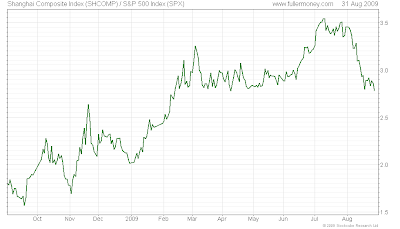 .
.


